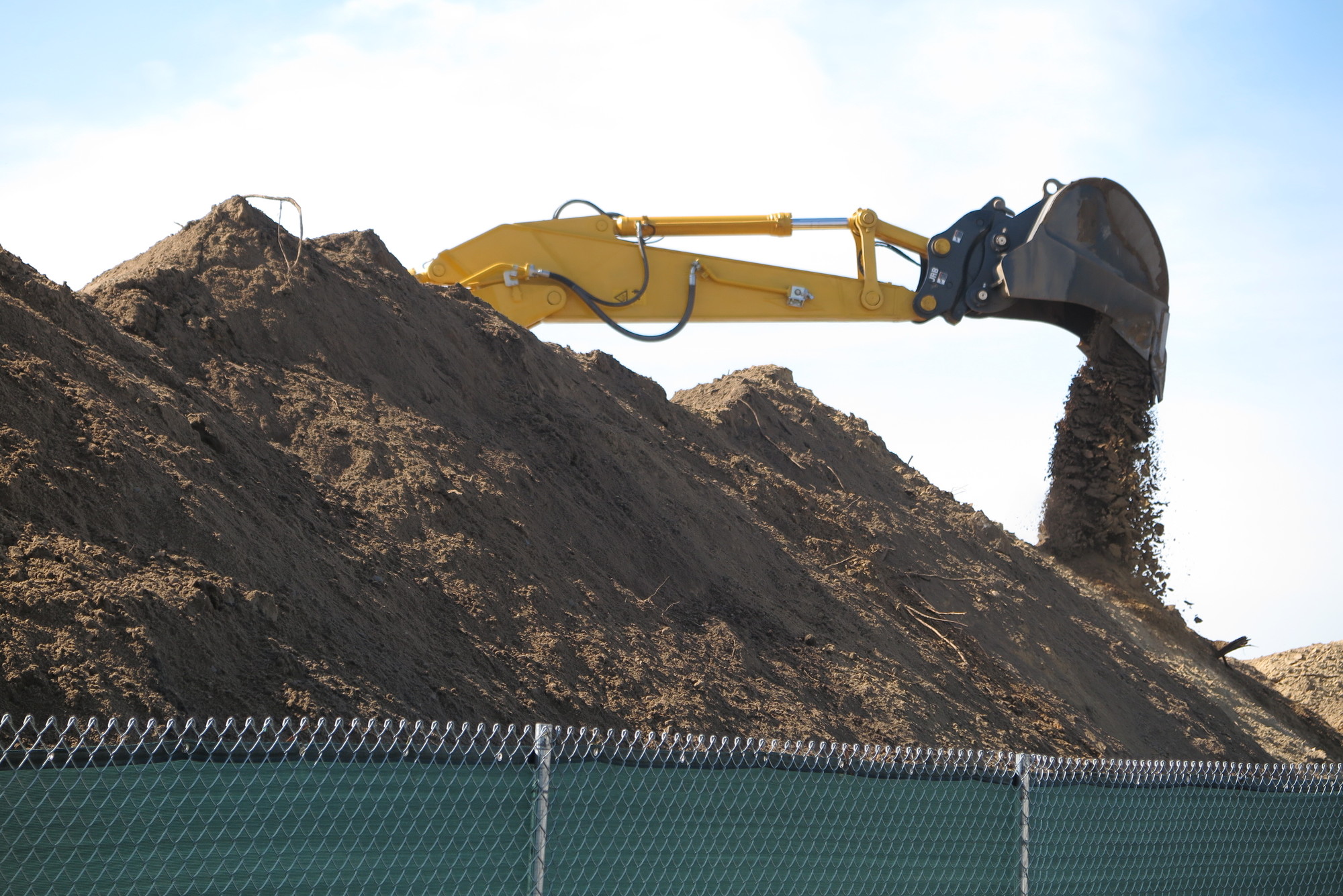'We're eating dirt' in Bay Park
Construction conditions should improve soon, officials say
From the west park section of Bay Park, roller rink or playground users can see several mounds of dirt that rise high above the length of fence separating the still-open park from the ongoing construction at the neighboring Bay Park Sewage Treatment Plant. Last week, at a meeting of the Bay Park Civic Association, residents told officials that those piles of dirt, rock and debris are causing major problems in their day-to-day lives.
“We understand the massive scope of the project and the amount of work that you’re doing inside the plant, but you have to take care of the outside,” said Hank Perlungher, who lives on Lawrence Street, near the plant.
According to Perlungher and some of his neighbors, dirt and debris from those large mounds is being scattered by the strong winds coming off the bay. They say it’s a quality-of-life issue, making it difficult for those who live near the plant to enjoy the long nights and warm temperatures of summer.
“… [W]e can’t even go outside if the wind is blowing from the southeast,” Perlungher lamented. “We’re eating dirt. It’s summertime and we can’t even go outside and take advantage of it. Forget having people over for a barbecue if the wind is going … it would be impossible.”
Rosemary Grose, who lives on Marjorie Lane, which winds around the plant, agreed that the blowing dirt is a constant problem for her and her neighbors. “It happens just about every day,” she said. “It’s always blowing around and it’s very unpleasant, especially now that the weather is getting warmer.”
Mike DeNicola, vice president of Hazen and Sawyer Environmental Engineers & Scientists, the company in charge of the ongoing construction at the plant, said that the mounds are needed for the work, which is focused on rebuilding and strengthening the plant, which was severely damaged in Hurricane Sandy in 2012. There are more than 53 acres of open soil inside the facility, and when winds pick up, they stir up dirt. Water trucks hose down the mounds to help keep them compacted, but there is only so much that can be done, DeNicola said.

 48.0°,
Overcast
48.0°,
Overcast 







